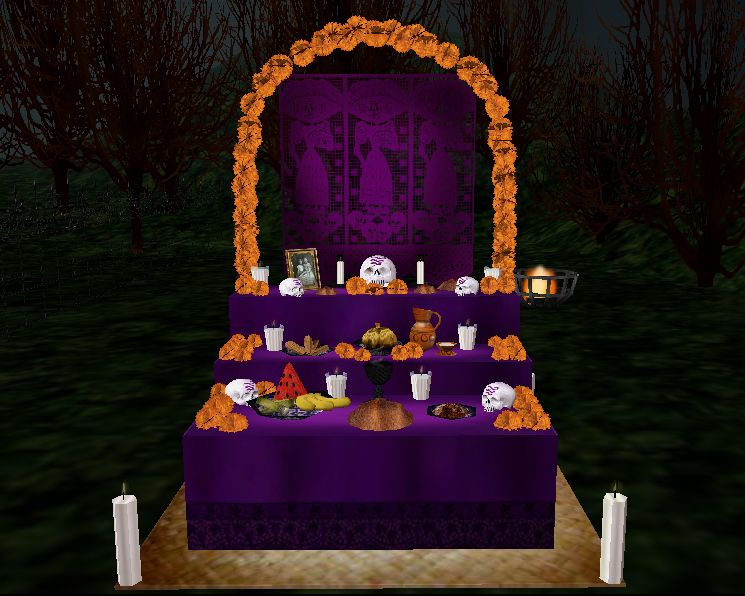Day of the Dead in Mexico is a mixture of religious and Pre-Hispanic traditions and beliefs. As a result of this mixture, the celebration comes to life as a unique Mexican tradition including an altar and offerings dedicated to the deceased. The altar includes four main elements of nature — earth, wind, water and fire. Earth is represented by crop: The Mexicans believe the souls are fed by the aroma of food. Wind is represented by a moving object: Tissue paper is commonly used to represent wind. Water is placed in a container for the soul to quench its thirst after the long journey to the altar. Fire is represented by a wax candle Copal is the resinous sap of a Mexican tree, burned as incense since the time of the Aztecs as an offering to the gods. On the Day of the Dead altar, the scent attracts spirits, drawing them home. It is also used to cleanse the area, and to ward off evil. Most altars are laden with the favorite foods, sweets, drinks and harvest fruits of each family spirit. Flowers, symbolizing the brevity of life, are massed and fashioned into garlands, wreaths and crosses to decorate the altar and the grave. The marigold is the most traditional flower of the season. In Aztec times it was called the cempasuchil. The act of preparing an altar by placing photographs, flowers, candles, favorite foods and drink of the loved one provides a special time to remember and to transform grief into acceptance. The living invite the spirits of the family to return home for a few hours of laughter, tears and memories. This version of the altar is tagged as GA as it does not contain drinks. Sugar skulls included.
